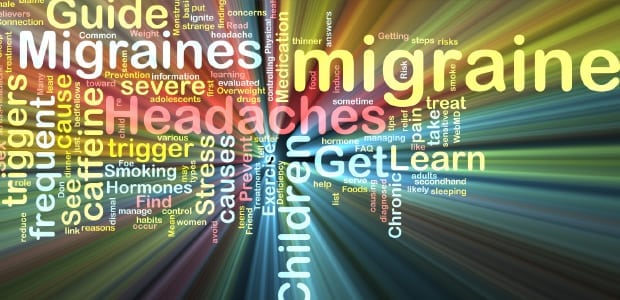Do you suffer from headaches? If so, you’re not alone. Millions of people around the world experience headaches on a regular basis. In some cases, headaches can be minor and go away on their own. But in other cases, they can be quite severe and require treatment. In this blog post, we will discuss physical therapy for headaches and how it can help provide relief!
Contents
Understanding Headaches

Headaches can be caused by a variety of factors, including muscle tension, stress, anxiety, and posture. Many people suffer from headaches on a regular basis, and for some, they can be debilitating. If you suffer from headaches, you may be looking for relief. Physical therapy may be able to help.
Physical therapists are trained to treat a variety of conditions, including headaches. They can help to identify the cause of your headaches and create a treatment plan to reduce your symptoms. Physical therapy for headaches may include exercises, massage, and stretching. If you are looking for an alternative to medication or surgery, physical therapy may be an option for you.
Does Physical Therapy Works For Headaches?
Yes, physical therapy can help relieve headaches. In fact, research shows that it can be as effective as medication for treating migraines and other types of headaches.
Physical therapy treatment for headaches often includes exercises that improve the strength and flexibility of the neck and shoulders. These exercises can help to reduce the frequency and intensity of headaches.
In addition, physical therapy can help to teach you how to properly manage stress. Stress is a common trigger for headaches, so learning how to better deal with it can help to reduce the number of headaches you experience.
Physical Therapy Exercises To Get rid Of Headaches

There are various types of exercises that get rid of headaches, They are as follows:
Neck exercises
These exercises help in stretching the neck muscles and relieve pain.
It includes:
- shoulder shrugs: raising the shoulders up and down
- atlas shrugs: holding a weight in each hand and raising the shoulders
- ear to shoulder: Tilt the head to one side so that the ear moves closer to the shoulder.
Biofeedback
In this therapy, sensors are attached to the head and neck to measure muscle tension and blood flow. The person is then trained to control these using relaxation techniques. For example, if the sensors show that the person has high muscle tension, they are taught to relax the muscles. This helps in reducing headaches.
Manual therapies
These involve massages and other techniques to release muscle tension. For example, your therapist may use:
- Myofascial release: This therapy targets the connective tissue in your muscles (known as fascia) to release tension and pain.
- Craniosacral therapy: This therapy uses gentle pressure and touches to relieve restrictions in your craniosacral system, which includes your skull, spine, and pelvis.
- Trigger point release: This therapy targets specific knots of muscle tension (known as trigger points) to relieve pain.
Cognitive behavioral therapy
This helps in changing the thought patterns which can trigger headaches. It also teaches relaxation techniques to deal with stress. For example, you might learn how to identify and change negative thoughts about your pain. You might also learn diaphragmatic breathing and progressive muscle relaxation to help manage stress.
Electrical stimulation
This therapy uses electrical current to relax the muscles and relieve pain.
- TENS: Transcutaneous electrical nerve stimulation (TENS) is a type of electrical stimulation that uses low-voltage current. The current is sent through electrodes placed on your skin.
- NMES: Neuromuscular electrical stimulation (NMES) is a type of electrical stimulation that uses higher-voltage current. The current is sent through electrodes placed on your skin.
- Lontophoresis: This therapy uses an electrical current to deliver medication through the skin.
- Heat therapy: Heat therapy can relax muscles and reduce pain. It can be applied using a heat lamp, hot packs, or warm water.
- Cold therapy: Cold therapy can reduce inflammation and numb pain. It can be applied using ice packs, cold water, or cryotherapy.
- Ultrasound: This therapy uses sound waves to create heat and reduce pain.
- Trigger point injection: This therapy involves injecting a medication into a muscle to relax it.
- Botox: Botox is a medication that can be injected into the muscles to reduce pain.
Yoga
Yoga is an effective exercise for headaches as it helps in relaxing the mind and body. It includes various stretches and body postures that help in reducing the tension in the muscles.
For example, the Camel Pose helps in stretching the neck and shoulders, which eases the pain in these areas.
Tai chi is a Chinese martial art form that involves slow and graceful movements. It helps in improving blood circulation and reduces stress.
Massage
Massage is another effective remedy for headaches. It helps in relieving the tension in the muscles and improves blood circulation. Massage helps in relieving muscle tension and headaches. For example, a study published Journal found that neck massage was effective in reducing the intensity and frequency of headaches. Different types of massage are as follows:
- Swedish massage: This is a gentle form of massage that uses long strokes to relax the body.
- Deep tissue massage: This type of massage uses firm pressure and slow strokes to reach deep layers of muscle and release tension.
- Trigger point massage: This massage focuses on specific areas of the body that are responsible for headaches. It involves applying pressure to these points to release the tension.
Acupuncture
Acupuncture is a traditional Chinese remedy that involves inserting thin needles into specific points on the body. It is believed to improve blood circulation and relieve pain. A study published in the Journal of Pain found that acupuncture was effective in reducing the frequency and intensity of headaches.
Aromatherapy
Aromatherapy is a popular treatment for headaches.
Acupuncture: It is a traditional Chinese therapy that involves the insertion of thin needles into specific points on the body. This helps in releasing pain-relieving chemicals and improves blood circulation.· Massage: Massage is an effective way to relieve headaches as it helps in relieving muscle tension and improving blood circulation.
These are some of the most popular physical therapies for headaches. If you are suffering from recurrent headaches, you should consult a doctor to find out the underlying cause and get appropriate treatment.
What Are The Benefits Of Physical Therapy for Headaches?
There are various benefits of physical therapy for headaches. They are as follows:
Reducing the intensity and frequency of headaches
Studies have shown that physical therapy can be effective in reducing the intensity and frequency of headaches.
A study conducted in 2008 showed that patients who underwent physiotherapy for their headaches had a significant reduction in the number of headaches per month and the intensity of the headaches.
Reducing the need for medication
Physical therapy can also help reduce the need for medication. A study conducted in 2010 showed that patients who underwent physiotherapy for their headaches had a significant reduction in the use of medication. For example, the use of painkillers was reduced by 50%.
Medication is often used to treat headaches. However, long-term use of medication can lead to side effects. Physical therapy can help reduce your reliance on medication by reducing the intensity and frequency of headaches.
Preventing disability
Headaches can cause disability. Physical therapy can help prevent disability by reducing the intensity and frequency of headaches.
A study conducted in 2011 showed that patients who underwent physiotherapy for their headaches had a significant reduction in the number of days they were disabled due to their headaches.
Reducing the risk of developing chronicity of headaches
Acute management of headaches is important to prevent chronicity.
Patients with chronic headaches often have comorbidities, such as anxiety and depression, which can increase the risk of developing chronicity.
Physical therapy can help to reduce the number of headaches and intensity of headaches.
Evidence suggests that physical therapy can be effective in reducing the risk of chronicity in patients with headaches.
Improving overall well-being
Physical therapy can also help improve your overall well-being. A study conducted in 2009 showed that patients who underwent physiotherapy for their headaches had a significant improvement in their overall well-being.
Headaches are one of the most common reasons people see a doctor. In fact, nine out of ten adults suffer from them at some point in their lives. And while many people reach for over-the-counter painkillers to find relief, there is another option that is often overlooked – physical therapy for headaches.
Physical therapy can be an extremely effective treatment for headaches, but it’s important to understand how it works and what to expect before beginning treatment. This complete guide will cover everything you need to know about physical therapy for headaches.
Conclusion
It may be concluded that physical therapy for headaches is an effective treatment option. Patients who receive physical therapy for headaches often report significant reductions in pain and disability. In addition, physical therapy can help to prevent future headaches by identifying and correcting underlying musculoskeletal issues. If you are suffering from headaches, consider seeking out a qualified physical therapist to see if this treatment option is right for you.
Physical Therapy help patients recover from pain. If you’re experiencing Back pain, Shoulder pain, Knee pain, Neck pain, Elbow pain, Hip pain, or Arthritis pain, a physical therapist at MantraCare can help: Book a physiotherapy session.


